#[who brought african people to the american continents??]
Note
In your opinion is RJ's choice to tell the story of IWTV through black!Louis, a way to skirt around the bloody white history? Is it a sanitization of the narrative?
ive been told that it wasnt rolin’s choice to make louis black, and that decision was already made by the time he got on the show. one i dont think that was an altruistic decision on amc’s part i think that was a business decision and two while rolin & maybe hannah is the main names ppl know , there were black producers, directors + writers on the show. we can see the differences in the draft script v. what aired in the final cut lol rolinda was falling into a slippery slope w/ onc vervain + lou there we see the final cut & how black ppl bts whacked him once or twice😭😭 also, what history?.. if anything, something remarkable about interview as a book is the fact that louis arrives to a spanish-colonized louisiana as a mortal boy, and as an adult man/fledgling vampire lives thru louisiana changing hands, the war of 1812, new orleans becoming the epicenter of a global slave economy.. him+ claudia leave during the civil war & enter europe after the franco-prussian war. but outside of trace cultural tells, the brief 1/4th of the book situated on a plantation where the vampires hunt and kill enslaved ppl or naming dates these all-white immortals are able to exist largely outside of ‘history’.. bc theyre white / pale in societies where white / pale people are dominant, most of anne’s vamps r able to ‘blend in’ and be deceptive predators in a way a black or brown vampire cannot. i am curious wym by sanitization of the narrative fr cuz ive barked on& on again on pimping, race, the erotic n shit so i feel like id just be beating a deadhorse here lol. in the hunt for 2d crimes to cancel a character for ppl do forget that louis is a rich girl in a dubai penthouse with a bloodfarm like omg god knows whats going on in dubai rn w/e it is its the furthest from sanitized i can think of.. e3 starting with louis interrupting lestat w/ real history of how ‘runaway’ slaves (read: ppl freeing themselves from bondage) when seized would be gored by slavers with their bodies displayed up on jackson square, and e3 ending with louis goring the alderman and displaying his body up against the st louis cathedral w the whites only sign holding up his entrails.. like by ‘sanitized’, what exactly would u be mentioning there?
#yn.#yn answers#show louis starts the interview by saying ‘one of my great grandpas was a mixed race slaver' [how did mixed race ppl rise in the AMERICAS.]#[who brought african people to the american continents??]#[how do u become 'mixed race' in the first place ??]
27 notes
·
View notes
Text
APPALACHIAN FOLKLORE 101
Appalachia has a rich history in the united states, which goes farther back than most tend to give it credit for. The Appalachian mountains are millions of years old, and humans have only lived in the region for 16,000 years or so, which means the mountains are bound to hold some mysteries and legends.
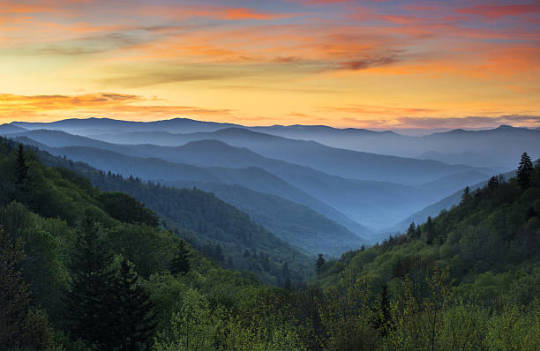
Many of these stories, and folk practices originate from the Native Americans, specifically Cherokee, and are mixed in with the superstitions brought over from the old world specifically English, Irish, and Scottish. As well as the practices brought over from the African Continent During the Slave Trade.
The Native population assisted the early settlers in Appalachia with ways to survive the area, grow food, and even forage for one of Appalachia's staple foods, RAMPS!!!
Let's delve into the history of Appalachian Folklore and the origins of everyone's favorite stories.
Cryptids and Myths
This is one of the most famous aspects of Appalachian folklore and one which outsiders know the most about, Appalachian Myths and their Cryptids that follow. Below I will go over a few of the more famous ones, which many have learned about, either second-hand or through living in the area.
The Moon-Eyed People
There was a group of humanoids called the Moon-Eyed People, who were short, bearded, and had pale skin with large, bright eyes. They were completely nocturnal due to their eyes being extremely sensitive to light. Although not mythical, they were considered a separate race of people by some. The tribes viewed them as a threat and forced them out of their caves on a full moon night. They were said to have scattered to other parts of Appalachia as the moon’s light was too bright for their eyes. There are some early structures that are believed to be related to the Moon-Eyed People, dating back to 400 BCE. Some theories suggest that they were early European settlers who arrived much before Columbus discovered the Americas. Other theories suggest they were people who had Albanism.

Image of The Moon Eyed People Statues in Murphy, North Carolina
Spearfinger
Spearfinger is a Cherokee legend of a shapeshifting, stone-skinned witch with a long knife in place of one of her fingers. She often was described as an old woman, which she would take the form of to convince Cherokee children that she was their grandmother. She would sit with them, brush their hair until they fell asleep, and then kill them with her “spear finger.” She had a love of human livers which she would extract from the bodies of those she killed. It was said she left no visible scars on her victims. She carried her own heart in her hand to protect it, as it was her one weakness. As the legend goes, she was captured and defeated with the help of several birds that carried the information to defeat her. Though she has been destroyed, sometimes you can hear her cackles and songs throughout the mountains.

Image of SpearFinger Cherokee Legend
W*ndigo
This spirit is said to go to where its name is called allowed so since most of us already know the name I won't be writing it out in completion. So out of respect for some of our native readers, it will remain censored
The W*ndigo is a creature, sometimes referred to as an evil spirit, that is said to be 15 feet tall with a body that is thin, with skin pulled so tight that its bones are visible. Many native legends view it as a spirit of greed, gluttony, and insatiable hunger. It is a flesh-eating beast that is considered most active during the colder months, and its presence is easily felt and smelt. It has been described as having a distinct smell of rot and decay due to its skin being ripped and unclean. It produces an overwhelming urge of greed and insatiable want. Most notably, it is not one to chase or seek after its prey; instead, it uses its terrifying mimicry skill. It often mimics human voices, screams, loved ones, or anything that might entice its victim to come to it. In some cases, it is believed the W*ndigo is a spirit that can possess other humans and fill them with greed and selfishness, turning them into W*ndigos as well.
Appalachian Folk Practices
Many of the common Appalachian folk practices stem from things the Native Americans and Enslaved Africans taught them mixed in with cultural practices from Europe. Here I will go over some of the most common practices done by the Appalachian people
Water Dowsing
water dowsing is a practice that has been done for hundreds of years in many different cultures. This practice was brought over by the European settlers and was how many people of the time found where to dig for their water. The practice itself is simple in nature, you take a forked branch from a tree and hold it in both hands and walk around once the stick points down due to the electromagnetic current that's where you dig your well.
this isn't exactly the best way to find water but many people still do it to this day.
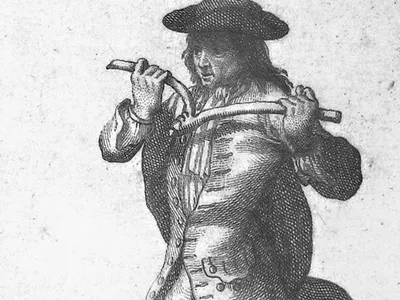
Image of Someone Using A Dowsing Rod
Bottle Trees
This practice originated in the Congo area of Africa, in the 9th century A.D. brought to America by the slave trade, in the 17th century. Bottle Trees, were popular in the American South and up into Appalachia, the spirits are said to be attracted to the blue color of the bottles, and captured at night, then when the sun rises it destroys the evil spirits.
This is still practiced in the modern era by many Appalachian Folk Practitioners
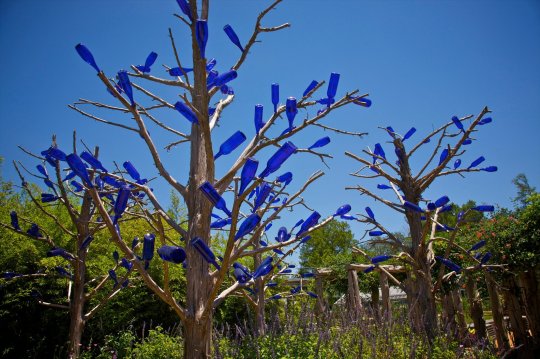
Image Of Bottle Trees
SIN EATING
This practice originates from the Ancient Greeks and Egyptians, it branched to many different cultures and has been practiced since antiquity by many Christian and Catholic tribes. And later making its way to America via immigration. The process was once a profession in Appalachia, in which food was placed on or near the deceased and a person dressed in all black would eat the food absolving the dead of all of their earthly sins. This essentially cemented their ability to get into heaven. The practice while sparsely done any more as a profession, it can still be found in many peoples funeral services to this day around the world.
Many cultures still do this practice and the sin eaters usually choose to hide their identity as the practice is seen as taboo to this day.
Popular Herbs To Forage In Appalachia Folk Practices
Wild Leeks or RAMPS!!!
Allium tricoccum, are a species of wild onion native to North America. They are a delicacy, and hold a special place in the hearts of many Appalachians. Native Americans such as the Cherokee ate the plant and used it medicinally for a variety of purposes including as a spring tonic. Early European settlers learned how to Forage from the Indigenous People and continued to eat and use ramps medicinally. Ramps provide many nutrients and minerals and historically have been used to nourish people after harsh winters.

*RAMPS poisoness Look Alike
False hellebore (Veratrum) is a highly poisonous plant that can be mistaken for a prized wild edible, the wild leek, or ramp (Allium tricoccum)
Chicken of the Woods
Laetiporus sulphureus. Chicken of the woods is a sulphur-yellow bracket fungus of trees in woods, parks and gardens. They are delicious and are loved by many foragers, Native Americans, and Appalachians alike. The Native Americans taught the early settlers that these were edible and have been a favorite ever since. Chicken of the Woods is most likely to be found from August through October, but it can be found as early as May and up to December depending on where you live.

*These have a poisoness look alike, Jack O Lantern mushrooms
The Jack-o'-lantern mushroom should not be eaten because it is poisonous to humans. It contains toxic chemicals that can cause severe stomach upset accompanied by vomiting, diarrhea and headache
PawPaws
The Pawpaw Asimina triloba, is well loved by Appalachian locals as a native fruit with a tropical taste. Pawpaw fruit is the largest tree fruit native to the United States, and its custard-like flesh has been said to taste like a combination of banana, pineapple, and Mango. The pawpaw has been used by Native Americans for centuries for both its fruit and its medicinal properties. Many tribes, including the Osage and Sioux, ate the fruit; the Iroquois used the mashed fruit to make small dried cakes to reconstitute later for cooking. PawPaw season is late summer, look for the smell of rotting fruit, eat the ones that are squishy to the touch.

*They resemble mangos on the trees, many options to eat the ones that are on the floor already as they usually have ripened, but you can also ripen them at home.
Appalachia has a rich and beautiful history filled with magic and delicious food. But the only real way to learn about Appalachia is to visit it. Go and speak with locals, learn about the history, their delicious foods, and powerful Grandma magic, and you too will fall in love with Appalachia.
Thank you for sitting down and having Tea with me on the Other side of the Great Divide
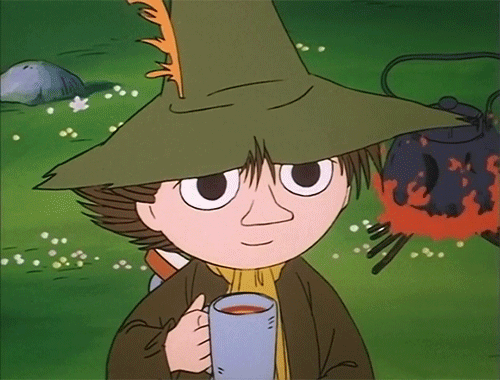
#witchcraft#ritual#occultism#esoteric#occult#spirit work#magi#magus#magick#witch#witchy vibes#witches#witch tips#appalachian folk magic#appalachia#appalachain mountains#american folklore#folklore#folklorist#appalachian culture#foraging#WanderingSorcerer
607 notes
·
View notes
Text
I don't know if I am missing something, but... Why everytime that a literature classic mentions South América, they describe it as this virgin, untouched by man, only forest and animals, paradise? Like, of course I can't compare the limited knowledge that other countries had about the continent in general when they are writing. More since the only information that could have been coming was probably Spanish propaganda, but this little line right here made my blood boil a little:
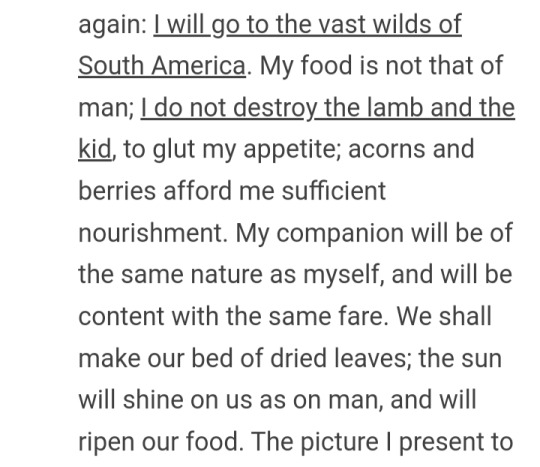
Nah Adam, the picture you painted is a racist, and colonial fantasy which paints Latinoamérica as this weird untouched "paradise" where the only living beings that live in it are animals, and not, you know, all of huge amount of people that lived here. All of the people born out of the colonizers, the indígenas, and the africans that were brought here as slaves. Latinoamérica is a big continent, and every continent has an insane amount of people living in it.
And I'm not even including the indigenous tribes that lived here before the spanish came, and fucked up everything. Currently there are 522 indigenous tribes in all of the south american continent. Before the spanish came here? It was estimated that there were thousands.
I doesn't matter if Adam and the possible lady creature somehow try to live in the jungles, because there are probably 4 or 5 tribes who have been living there longer.
Also, as a detail that it's not mentioned, Frankenstein was written in 1818 right? So I assume that the novel is happening in the same time frame right? (If I am wrong tell me). So, a little bit of history for that time frame. Here, in the land of sangre caliente, the whole continent was going through the Spanish-American wars of independence, and those series of armed conflicts lasted between 1809 and 1829. It was a bloody time, the mortality rate went to the sky, a full on war where the countries that we know today that live in the latinoamerican continent were fighting for pure freedom from the spanish dictatorship. And after that? Civil wars, and the poverty was followed it.
I know that Adam doesn't know this, because there was not a single word about Latinoamérica in his education, and Victor is also ignorant of the situation too since it probably doesn't attract his attention... But still.
#If Adam is succesful with his plan then he better kiss his ass goodbye depending on where he lands#The indigenous tribes and the locals here in Colombia will fuck him up#The vast wilds of South América... Bitch everyone was fighting for their freedom#frankenstein weekly#frankenstein#adam frankenstein#victor frankenstein
126 notes
·
View notes
Text
Gentlemen, Rustics, Accents, and Imperialism
Reflecting on binary oppositions in The Patriot, I'm surprised (and a little embarrassed) that I haven't discussed one of the more obvious ones: foreigner/native. Oh, this is a thorny one! For the sake of what I'm hoping and praying will be brevity, for once, I'm going to focus on how this distinction is portrayed through characters' accents. It turns out that accent choices do a lot of heavy lifting in this film to conceal historical truths, particularly those that paint South Carolina Patriots in an unflattering light.
The first accent to cover is the most often heard foreign one, and it is, almost, one accent. Although the 18th century British Army was full of men who joined to escape a life of poverty or at least found it be a better option for supporting their families than the professions available at home, we never hear them. There are no Cockney redcoats in this film. The accent we do hear often--from Cornwallis, O'Hara and Tavington--belongs to the landed gentry. The only British character who does not share it is the wounded private Tavington interviews after Martin's massacre in the woods, who is also the only speaking British soldier below the rank of captain. By comparison, the Americans have different accents and are represented by people of different classes, upholding a distinction between the oppressed, poor native-born population and an oppressive, wealthy foreign one that has little basis in historical reality.
While the difference in class and accent for Americans is more accurate, the accents themselves are not. The one belonging to Martin and his children, Charlotte Selton, the Howards, and James Wilkins is recognizably American but not distinctly Southern. More likely, Colonists would have had accents reminiscent of their, or their parents', country of origin (something AMC's Turn: Washington's Spies captures far more effectively than The Patriot). The development of distinct, regional accents takes generations. Interestingly, the more rustic characters, the ones we first meet when Martin and Villeneuve recruit at the rowdy tavern, do have clear, modern Southern accents. I'll return to this later, but for now I wonder why there has been time for some South Carolinians to develop a thick backwoods Southern accent but not for others to develop the kind of genteel Southern drawl spoken by such specimens as the Epps in Steve McQueen's 12 Years a Slave. In this respect, Charlotte and Tavington are near perfect opposites. He has lost the land and wealth that were his birthright but kept his accent; she lacks the accent but has the plantation full of inherited slaves.
It also bears mentioning that all the Black characters, enslaved and free, have American accents even though the transatlantic slave trade was still in full force and Charleston harbor was the busiest slave port in the colonies. Occam and Martin's workers could just as easily have had African accents, but perhaps that would too readily remind the audience that they did not simply co-exist with White South Carolinians but had, or been born to parents who had, been kidnapped from another continent and brought to the colony against their will.
Another accent The Patriot wholly silences is, of course, Cherokee. Indeed, no Cherokee person speaks in the film at all even though fighting them is a significant part of Martin and other characters' backstories. Part of the reason characters like Rollins and Billings do have recognizably Southern accents is likely deference to the stereotype that Southerners are more "rustic" than Americans from other regions, but there is something even darker at play. Since regional accents take so long to develop, that the characters Martin fought the Cherokees alongside have one indicates that their families have also inhabited this land for a very long time. The narrative presents them as South Carolina natives at the expense of the actual Native people they forced to give up land they'd inhabited for centuries even as they rebelled against oppression at the hands of British "foreigners."
That there are two scenes featuring Cherokees filmed but not included in the final cut--a flashback to Fort Wilderness at the beginning and a a brief, unheard exchange between Tavington and Cherokee scouts--illustrates the difficulty of fully erasing Native people from the history of place in which they played such a significant role. Similarly, we see many Black people on Charlotte's plantation and in the sea island community to which she and Martin's children escape, but almost all of them are in non-speaking roles. The Patriot asks us to sympathize with South Carolinian Patriots for their oppression under British rule but ignore their participation in the "ugly business" of imperialism through African slavery and Native genocide. The story may not be able to erase people without whom colonial South Carolina would be wholly unrecognizable, but it can certainly silence them.
#the patriot#imperialism#african slavery#native genocide#accents#american revolution#south carolina history#whew#this isn't too terribly long
10 notes
·
View notes
Note
Apologies this may not be a well recieved comparison but also thinking from the context of African Americans who are descendants of slaves. What claim would they have back in Africa where their ancestors originated from if someone decided to go back above those that are there currently?
Idk but send me to South Africa and I’d love to find out.
But in actuality I was having this thought in the reverse just now. If indigenous Americans were given their land back, and it happened to be where I live. Where would I go? My ancestors were forcibly brought here from a location I can’t pinpoint besides it was on the continent of Africa.
At what point do we grapple with the fact that we have a population that could not realistically fit “where they originated” or one that doesn’t know where they “came from”.
The European colonization of the world has now led to more people of European descent than could fit in Europe as well as the slaughter of huge percentages of the indigenous people they colonized where the numbers don’t really exist to support themselves as a nation.
7 notes
·
View notes
Note
what did u mean when u said erik (kilmongers) views on the world and goals for wakanda were based on his experiences in the military?
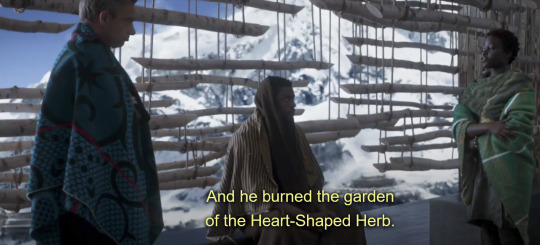




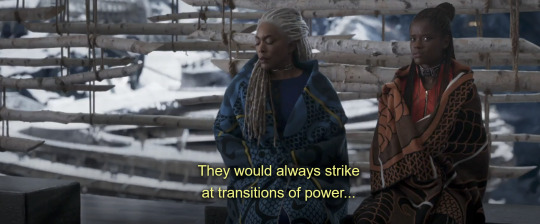
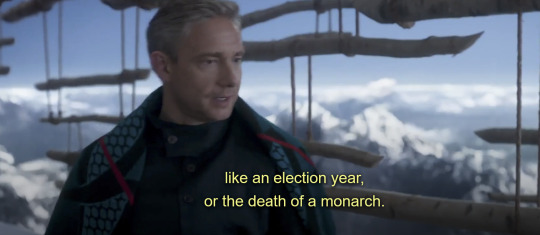
so rather than uphold and maintain tradition, a tradition that has not been disrupted or influenced by the West, he approached Wakanda the way the American military he served in would to destabilize a country
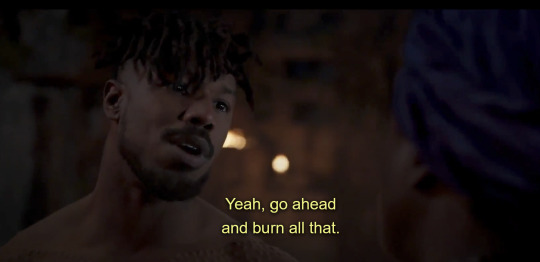


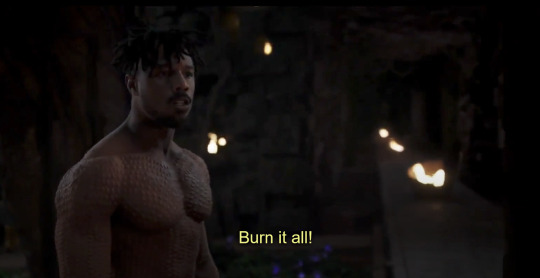

he even flat out says that his experience killing in the military, including killing people on the African continent, prepared him for the moment he'd take over Wakanda

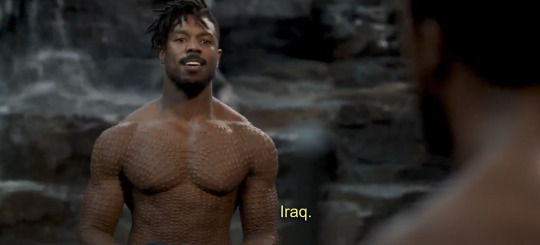



whereas Nakia, for instance, actually does what she can to help in other countries (rather than help in destabilizing them), the first time we see her she's liberating women in Nigeria

and she also pushes for Wakanda to help those in need

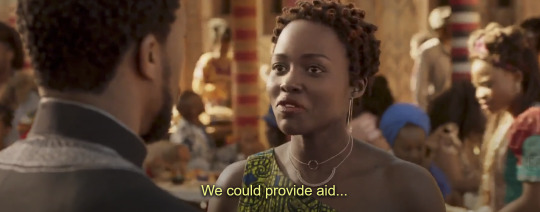


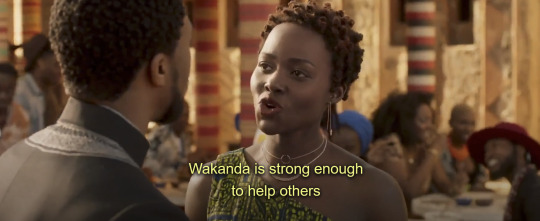
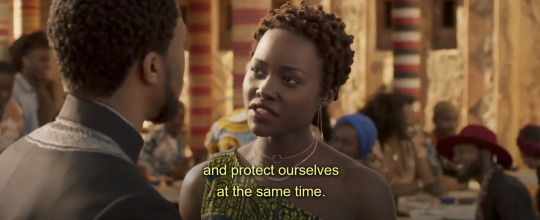
Killmonger's vision may mention liberation (and I've spoken about how it's actually about destruction: I think it is made clear that he doesn’t actually intend for the oppressed to overthrow the oppressor, his intention is destruction [...] He admits as much during his final fight with T’Challa when he proclaims that the world has taken everything from him, everything he ever loved and this way they’ll be even) but he is quick to kill or enact violence against Black people, specifically Black women, who stand in his way


but his scope and even his rhetoric is heavily reminiscent of American exceptionalism and British imperialism


and I'm not even talking about violence especially considering a battle with Killmonger and his allies is what brought Wakanda back to T'Challa's rule, and in the beginning of the movie we see Okoye kill one of the men who were transporting the kidnapped women, enacting violence to free oneself from one's oppressors is logical (which is why in Wakanda Forever, I was extremely irritated because NAMOR WAS RIGHT) but Killmonger is specifically going to use what he was taught by the military and the CIA to bring about his vision
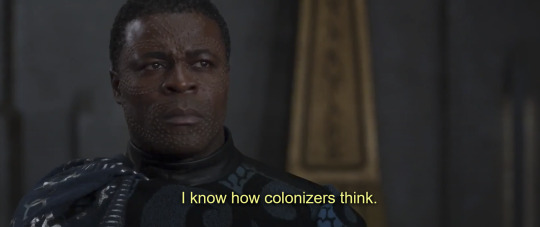

11 notes
·
View notes
Note
Aren't there some diseases or genetic disorders which are more common among races though?
yeee so. this is actually a common misconceptions which has caused a lot of issues in medical fields - like in america for example, "black" people are sometimes misdiagnosed or not diagnosed with some conditions because of this belief
there are conditions which are more common in ethnicities, not races. because "race" is an incredibly broad concept which encapsulates several ethnicities, some which have great genetic variability among each other
since i brought it up per example its thought that sickle cell anemia is a "black" or "african" condition (as in some places where malaria is present, a kind of sickle cell helps give immunity to malaria). however, the higher presence of sickle cell is present only in certain regions of africa and in certain peoples, not across the entire continent - the continent of africa having the highest genetic diversity between groups of any other
on the same topic, in america black people are often classified as one "race" believed to have similar health conditions. however, the vast majority of african americans here are mixed with a wide variety of other ethnicities, as well as often more than one african ethnicity. thus, genetically speaking, there is variation and it is much more complicated. while the shared history of slavery and systematic opression has similar epigenetic impacts, it is again, more complicated than just one "race." this also leads to many cases of medical malpractice, in which people of several races in america are often Assumed to have xyz condition or to not have xyz condition because it is not common in their "race," when they may or may not have it anyhow, or when it is their ethnicity which matters and not this
other examples would be uh idk europe. it is said oh, europeans are more prone to xyz. this is true in some cases, but it goes by ethnicities. there are several ethnicities in europe. blood type it has been found affects rates of several diseases, including cancers, diabetes, autoimmune things, and many other stuff.... however, based on ethnicity, not "race", people are more likely to have a certain blood type group which would affect them. this goes for other things
ooorr idk another example. it is often said oh (insert race here) is lactose intolerant. except even though yes, there is a global distribution of who is and isnt lactose intolerant, there are Several, not one, genetic mutations which make one able to drink lactose, which have evolved in several regions of the globe separately - from places in africa to the middle east to europe to asia. thus, ethnicity and the history of that ethnicity is what determines this, not "race"
this isnt a very in depth reply but as a quick answer i hope it makes sense. "race" is Wayy too broad of a concept to base any sort of medicine on
6 notes
·
View notes
Text

LETTERS FROM AN AMERICAN
July 3, 2023
HEATHER COX RICHARDSON
JUL 3, 2023
And on July 4, 1776, the Second Continental Congress adopted the Declaration of Independence, declaring: “We hold these truths to be self-evident, that all men are created equal, that they are endowed by their Creator with certain unalienable rights, that among these are Life, Liberty and the Pursuit of Happiness.”
For all the fact that the congressmen got around the sticky little problem of Black and Indigenous slavery by defining “men” as “white men,” and for all that it never crossed their minds that women might also have rights, the Declaration of Independence was an astonishingly radical document. In a world that had been dominated by a small class of rich men for so long that most people simply accepted that they should be forever tied to their status at birth, a group of upstart legislators on the edges of a continent declared that no man was born better than any other.
America was founded on the radical idea that all men are created equal.
What the founders declared self-evident was not so clear eighty-seven years later, when southern white men went to war to reshape America into a nation in which African Americans, Indigenous Americans, Chinese, and Irish were locked into a lower status than whites. In that era, equality had become a “proposition,” rather than “self-evident.”
“Four score and seven years ago,” Abraham Lincoln reminded Americans, “our fathers brought forth on this continent, a new nation, conceived in Liberty, and dedicated to the proposition that all men are created equal.” In 1863, Lincoln explained, the Civil War was “testing whether that nation, or any nation so conceived and so dedicated, can long endure.”
It did, of course. The Confederate rebellion failed. The United States endured, and Americans began to expand the idea that all men are created equal to include Black men, men of color, and eventually women.
But just as in the 1850s, we are now, once again, facing a rebellion against our founding principle, as a few people seek to reshape America into a nation in which certain people are better than others.
The men who signed the Declaration of Independence on July 4, 1776, pledged their “Lives, [their] Fortunes and [their] sacred Honor” to defend the idea of human equality. Ever since then, Americans have sacrificed their own fortunes, honor, and even their lives, for that principle. Lincoln reminded Civil War Americans of those sacrifices when he urged the people of his era to “take increased devotion to that cause for which they gave the last full measure of devotion—that we here highly resolve that these dead shall not have died in vain—that this nation, under God, shall have a new birth of freedom—and that government of the people, by the people, for the people, shall not perish from the earth.”
Words to live by in 2023.
LETTERS FROM AN AMERICAN
HEATHER COX RICHARDSON
#Heather Cox Richardson#letters from an american#history#all men are created equal#equality#justice#declaration of independence
8 notes
·
View notes
Text
By: Neirin Gray Desai
Published: Feb 23, 2023
Black Panther communist Angela Davis - who teaches that U.S. was built by racist colonizers - faces calls to pay reparations after genealogy show reveals her white puritan ancestor arrived in America on the Mayflower
• Angela Davis, 79, learned that her ancestor came to the US on the Mayflower
• The former Black Panther also discovered she had two white grandparents
• She appeared on PBS's Finding Your Roots in an episode that aired on Tuesday
A famed Black Panther who's also a communist has faced calls to pay reparations after discovering her ancestors were white puritans who arrived in the US on the Mayflower.
Angela Davis, 79, was flabbergasted to discover both sides of her family were white, and that her mom's ancestors were slave owners, on PBS show Finding Your Roots.
And the stunning revelations sparked calls for the famously woke Marxist University of California professor to herself pay reparations, having previously called on whites to pony-up in the past.
Sharing a tweet about the show, conservative pundit Matt Walsh wrote: 'It gets better. She's also descended from a slave owner. On her father's side is a pilgrim. On her mother's side is a slave owner. Looks like Angela Davis owes some reparations.'
Another Twitter user called AK Kamara wrote: 'Angela Davis, the radical Marxist and former black panther, recently discovered she is also the ancestor of colonizers and slave owners. I guess she owes herself reparations. This timeline is hilarious.'
Davis became nationally known in 1970 when guns she owned were used in the holding up of a Marin County courtroom in California which left four dead, including the judge.
After the FBI issued a warrant for her arrest she went on the run and became listed as one of the department's 10 Most Wanted. After her eventual arrest she spent 16 months in jail before being found not guilty.
Davis was born in Birmingham, Alabama, in 1944 during an era of segregation and violent racial division in the South.
While studying in West Germany in her youth she was drawn to far-left politics and upon returning to the US became involved with the Black Panthers and the Communist Party USA.
She appeared shocked during the TV interview that aired this week in which Finding Your Roots host Henry Louis Gates, Jr. told her of her ancestry.
'No. I can't believe this. My ancestors did not come here on the Mayflower,' she said - only to be later told that they did indeed arrive in the US aboard the famed pilgrim ship.
The Mayflower was an English boat that brought white English families, known as the Pilgrims, to the American continent to permanently establish the New England colony in 1620.
'You are descended from the 101 people who sailed on the Mayflower,' reiterated Gates Jr., who is the director of the Hutchins Center for African and African American Research at Harvard University.
The one-hour show, in which public figures learn about their ancestry, outlined how William Brewster, who traveled aboard the boat with his wife Mary Wentworth Brewster, was Davis's 10th great-grandfather.
Mary was one of only five adult women from the Mayflower to have survived the first winter after arriving in the US and one of only four such to survive until the 'first Thanksgiving' in 1621, which she was said to have helped cook.
The revelation caused many to point out the complexity of ancestry and on social media some suggested that by some logic Davis should pay black reparations.
The concept of reparations - an idea she has endorsed in the past - is that people with ancestors who were enslaved should be financially reimbursed by those whose ancestors enslaved them.
'This vividly illustrates the absurdity of reparations as a concept, among other things,' said one person on Twitter, in response to a clip of the revelation.
'Before any talk about reparations everybody needs to take the ancestry DNA test. I think a lot of people would be shocked to to discover who they were descended from,' said another.
Davis also made discoveries about her mother, Sallye Bell, who was found to be the daughter of a successful white Alabama lawyer who himself descended from a slave owner.
Bell was a school teacher and grew up in a foster home, never knowing either of her biological parents. Her mother had genetics that traced back to Africa but her father was John Austin Darden, who was also involved in politics, and was born in Rockford Coosa, Alabama, in 1879.
'He has my mother's lips,' Davis said as she was presented a photo of her grandfather. 'I can't get used to the fact this is my mother's father.'
A clipping from an old Alabama newspaper shone light on who Darden had been.
'The former publisher of the Goodwater Enterprise, who served as both a representative and a senator at various times from 1914 to 1933, had practiced law here 40 years.'
'Was he a member of the Ku Klux Klan or the white citizens council?' Davis asked. 'That's something I would also want to know. Because in those days in order to achieve that power one had to thoroughly embrace white supremacy.
'I'm both glad and I'm angry. I'm really, really angry,' she added.
As Gates went back further in time things got murkier still. Stephen Darden, her fourth great grandfather, was born in colonial Virginia around 1750.
He was a patriot who played the drums during the Revolutionary War, according to a muster roll. Afterwards he moved from Virginia to Georgia, where he owned a farm and at least six slaves.
'I always imagine my ancestors as the people who were enslaved. My mind and my heart are swirling with all of these contradictory emotions,' said Davis.
'I'm glad on the one hand we've begun to solve this mystery, we have something we didn't have before, but at the same time I think it makes me even more committed to struggling for a better world.
'This world that could give rise to such a beautiful person as my mother was not the world I want to see in the future,' she added.
Davis's father Benjamin Frank Davis grew in up in Lyndon, Alabama. His mother was Mollie Spencer butm similarly, nothing was known about his father.
Alabama Census records indicated that for at least ten years Mollie lived next door to a white man named Murphy Jones. Records stated that he sold her two acres of land for two hundred dollars and that the two were likely relatively close.
Using genetic profiles of Murphy's known living relatives, researchers found multiple matches to Angela, indicating that Jones was her grandfather.
Mollie Spencer's father was named Isom Spencer and was listed as collateral on a loan document filed by a slave owner named William K. Pauling, who owned a plantation in Marengo, Alabama.
'I assume that my ancestors lived on plantations as slaves, but of course I didn't know who they were and I didn't know who the slave owners were,' she said.
It transpired that Isom was a remarkable figure who marked the transition of her family from enslaved to free. Court records uncovered by PBS showed he even brought a complaint against the slaver over his nephews, who were being held in the plantation under 'apprenticeships'.
'I'm happy to find there's a motif of resistance there because that is what I feel I've been trying to do since I was a teenager,' said Davis, reflecting on her grandfather's struggle.
==
Couldn't happen to a better bigger race-baiter. It's even better than the time Henry Rogers blew up his entire schtick with one tweet. It's kind of like David Duke finding out he's the descendant of African slaves. They should do Nikole Hannah-Jones next.
It will be interesting to see how much - or, more likely, how little - integrity she has in the face of this information. Will she reconsider the fraudulent scholarship she's injected into her bogus academic domain, of which she's now on the other side? Or will she adhere to it and admit to the same inherited complicity, benefit and guilt in colonialism and slavery, not to mention the racism her ideology (and historical revisionism) claims is the founding principle and primary inheritance of the USA?
#Angela Davis#Mayflower#LOL#funny#ancestry#inherited guilt#slave owner#colonists#colonialism#irony#race baiters#academic fraud#delicious#revisionist history#historical revisionism#woke activism#wokeness as religion#wokeism#woke#cult of woke#religion is a mental illness
18 notes
·
View notes
Text
Chicago's Fascinating History of Change

Chicago is one of America's largest cities, having grown from a small village of Native Americans to the bustling metropolis it is today. Its fascinating history takeout can be traced through both its cultural roots and developing infrastructure over the last 2 centuries.
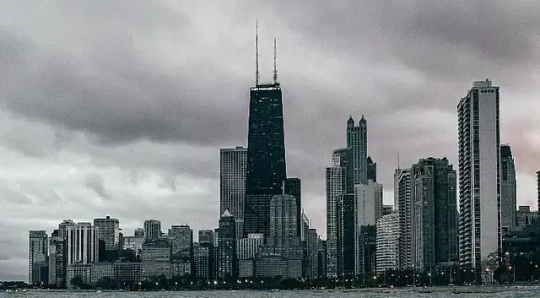
Chicago's History of Change. Photo by Victor Lozano. Unsplash.
Chicago's History in Rich Explorers
The City of Chicago, with its extensive and rich history, has witnessed significant transformations. As one of the largest cities in the United States, it has evolved from its founding by French explorers to becoming an industrial powerhouse. Chicago has navigated through numerous eras, leaving an indelible mark on America. Established in 1779 as Fort Dearborn by Jean Baptiste Point du Sable, a fur trader of Haitian and African descent and considered Chicago's first permanent resident, the city's historical tapestry is woven with diverse threads.

Chicago's History of Change. Photo by Victor Lozano. Unsplash.
Early Settlements: Native American Tribes
The history of the United States is intrinsically linked to that of Native American tribes, who first settled in North America thousands of years ago. Tribes like the Apache, Cherokee, and Sioux were among the earliest people to inhabit the continent long before Europeans began exploring.
These tribes lived a nomadic lifestyle for much of this time, forming small settlements as they followed migrating animal herds or sought out lands with more fertile soils.
As these settlements evolved, becoming more extensive and intricate, they developed distinct cultural identities. Notable examples include the Iroquois Confederacy, an alliance of five Native American nations, and the Mississippian Mound Builders, who constructed expansive earthworks in present-day Louisiana and Mississippi.

19th Century Boomtown. Photo byBernd Dittrich. Unsplash.
19th Century Boomtown: Immigration and Development
The 19th century brought an influx of immigrants to the United States, particularly in cities like Chicago. Many immigrants were drawn to this bustling city by its promise of opportunity and potential for personal growth. This time marked a significant boomtown as new businesses, industries, and infrastructure began to develop remarkably.
As these immigrants settled into their new city, they quickly made their mark by introducing fresh ideas and innovations that led to further economic growth. By the end of the 19th century, Chicago had become a major industrial center with an international economy rivaling other large cities worldwide.

20th Centuries. Photo by Geoffrey Hubbs. Flickr.
Manufacturing and Migration: 19th and 20th Centuries
The 19th and 20th centuries marked a period of massive industrialization, and increased demand for manufacturing labor came with it. By 1900, in Chicago's metropolitan area factories. Many of these employees had come from Germany, Ireland, Italy, and other parts of Europe to work in the factories due to limited job prospects back home. This need drove many people to migrate from rural areas to large cities such as Chicago in search of employment opportunities.
Chicago was once known for its large stockyards that processed livestock meat, but the city also grew into one of the most important centers for manufacturing in the United States. Immigrants were critical in fueling Chicago's remarkable growth during this time. They brought new skills and ideas that helped propel the city into a major center for innovation and industry.

Chicago Fire of 1871. Photo by Meridith112. Flickr.
The Great Chicago Fire of 1871
The Great Chicago Fire of 1871 remains one of the most catastrophic disasters in U.S. history. Sparking on October 8th, a small fire broke out on the Southwest Side of Chicago, swiftly engulfing the city. The inferno raged for two days, consuming over three square miles of land and devastating an estimated 17,500 buildings.
The cause of the fire is unknown to this day, though many theories exist as to what may have sparked it. Some believe that a cow belonging to Mrs. O'Leary kicked over a kerosene lamp in her barn, while others suspect that faulty wiring or arson was responsible for starting the blaze.
Whatever its cause, conditions were ripe for disaster due to an arid summer that left much of Chicago covered in sawdust and dried lumber - perfect fuel for any spark that might be ignited.

Post-Fire Rebuilds. Photo by Randy von Liski. Flickr.
Growth Despite Adversity: Post-Fire Rebuilds
The City of Chicago is no stranger to adversity, and the aftermath of the Great Chicago Fire of 1871 is a prominent example. Despite this catastrophic event, the city was able to rebuild and grow in the wake of destruction.
With determination and resilience written into its history, it is no surprise that Chicago has been able to once again find success after facing another setback: the wildfires of 2020. In June and July last year, more than 11,000 acres were burned by wildfires in northern Illinois due to extreme weather patterns across the Midwest.
Fortunately for the citizens of Chicago, despite these conditions leading to some property damage, the city maintained its strong sense of community throughout its recovery efforts. After a summer full of dedicated work from local officials and volunteers alike, many areas have experienced positive change as they rebuild their city.

Changing Landscape. Photo by Jim. Flickr.
Changing Landscape
The 21st century has changed the face of cities, and Chicago is no exception. For centuries, people have flocked to this storied city on Lake Michigan's western shore for the opportunity and a chance to make a home for themselves. But in the last 20 years, the city has seen changes entirely transforming its landscape.
The City of Chicago boasts a long and rich history. As one of the largest cities in the United States, it has undergone substantial transformations over the years. From its founding by French explorers to its evolution into an industrial powerhouse, Chicago has navigated through numerous eras, leaving an indelible mark on America.
Established in 1779 as Fort Dearborn by Jean Baptiste Point du Sable, a fur trader of Haitian and African descent and considered Chicago's first permanent resident, the city's historical tapestry is woven with diverse threads.
Conclusion
Chicago boasts a long and illustrious history marked by adaptability. Originating as a humble river settlement, it has transformed into a major metropolis. Over the years, the city has experienced numerous changes, including population booms, economic and technological advances, and architectural wonders. Chicago's story of progress is both exciting and ever-changing.
Chicago has a rich history and numerous attractions, such as The Magnificent Mile, Navy Pier, and the Art Institute of Chicago. There are also world-class shopping districts, lively entertainment venues, and plenty of outdoor activities to enjoy during all seasons of the year.
Moreover, its diverse communities offer an inviting atmosphere and there are many different cuisines with many different cuisines to sample from around the world. With so much to see and do in Chicago, it's no wonder it continues to be a popular spot for visitors from far and near.
Sources: THX News & Wikipedia.
Read the full article
#Chicago#Chicago-ACitywithaHistory#Chicago'sFascinatingHistory#HistoryofChicago#TheChicagoAthenaeum#UniversityofChicago
2 notes
·
View notes
Text
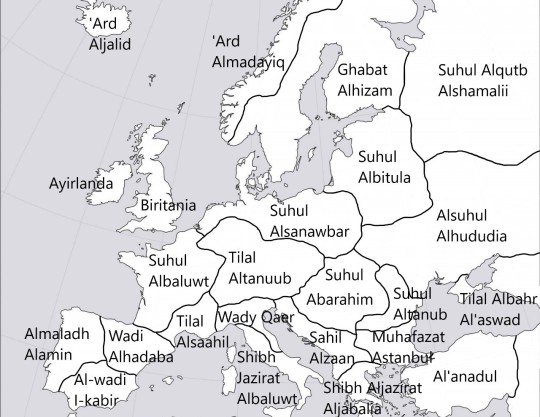

On the Fall of the Old World and the Rise of the Muslim Bros
Due to the last great exchange of blows, which took place in an area that was long ago called Ukraine, the former superpowers of the earth exhausted themselves to such an extent that they finally perished as a result. In the course of it, internal unrest forced the Americans to withdraw from the old world, leaving behind nothing but a plundered continent besides empty US military barracks.
Meanwhile, the EU, as a vassal union of the USA, lost the energy war with Russia, which accelerated their economic decline to the level of developing countries. At the same time, Russia crumbled under the losses sustained. The inherent incompetence of the Slavic peoples made it impossible for them to ever recover from the damage they had suffered. But even what was then the strongest nation in the world fell apart after a second American civil war broke out between Republican and Democrat fractions, as a result of which most American cities were razed to the ground and large parts of the population died.
The chaos wrought by the West favored the birth of the Muslim Brotherhood, which quickly found many supporters in the rubble of Europe and America; desperate men who lost everything and therefore submitted to the ideology of Bro Islam in exchange for security and food. Initially only out of necessity, later out of deep conviction, more and more people followed the teachings of the first allvater Khalīd Ripīn, who gave his followers answers and ultimately a better future as Muslim brothers.
Acting as benefactors, the Muslim Brotherhood educated many youngsters and provided them a perspective while instilling the right faith to make the young lads staunch followers of Bro Islam who carried on the teachings of Khalid Ripīn with all their might. Soon the first caliphate of Germanistan, as they called Europe from then on, arose out of the rubble of the Old World, where Germans, Arabs, Turks, Serbs, Romanians, Africans and many more merged to form one nation of brothers who spoke an Arabic-German mixed language, strongly influenced by English and others, over time.
One and a half centuries later, in the year 136 after the founding of the first Bro Islamic settlement in Germanistan – according to the old calendar also the year 2197 – the Muslim Bros ruled the entire continent with the conquest of the British Isles from then on. All of Britain was ruthlessly destroyed, for hatred of the West endured for many subsequent generations of Bros. In its last days, Britain had no chance against the hordes of Allah's warriors. Numerically and technologically superior, the Muslim Brotherhood wiped out every British town to incorporate the cleansed land into the Muslimbruderreich as the last missing caliphate.
Today not a single building reminds us of the earlier time before the new Bro Islamic time reckoning took place; nothing points to the postmodern nations of Europe except some documents in the archives to show all future Muslim Bros how wrong, corrupt and sick the old world was before Allvater Khalīd Ripīn brought Allah's true teachings in terms of Bro Islam to heal the broken world through the work of his sons in spirit, the Muslim Bros.
—
A big thank you to Bro @loverofbikersandrubbr.tumblr.com for his groundwork in finding new better names for the many needless countries of Europe. LOL
21 notes
·
View notes
Text
The hatred toward reparations for African Americans.
Salutation to my blog, I want to share my feelings on the reparations movement and the viritol that is being received by many bigoted people. This will be a long post as a disclaimer. This tweets I'll share is not for a "witch hunt," but bringing awareness to an issue not receiving enough media attention with discrimination and racism toward African Americans and reparations.
To start, the word reparation means to make amends for a wrongdoing, usually through compensation.

African Americans were promised reparations (40 acres and a mule) after the horrific treatments of slavery, but the promise was never honored for all. Here is an article from PSB that discusses the topic.
The topic with reparations to me did not gain such animosity until Black Americans began to demand what is owed, and the reason is not only due to slavery. For over 400 years there have been cases of
Lynchings and the many unsolved murders
Stolen land (Tulsa massacre, Forsyth, GA, African American farmers)
Human experimentation (Medical Apartheid by Harriet A. Washington discusses this), The Tuskegee Syphilis Experiment
Jim Crow Era
Racism and discrimination in the military and medical industry (e.g. Henrietta Lacks and Black women neglected in hospitals)
Redlining
Police brutality
COINTELPRO from the FBI (spying on the civil rights members and Black Panther Party)
Cases like Emmett Till, The Birmingham Church bombing, Tulsa or Rosewood massacre, The 1985 Philadelphia bombing, Frank Embree, James Byrd Jr. leading up to today with Elijah McClain, Sandra Bland, George Floyd, Sinzae Reed. Don't forget The Buffalo shooting in 2022 and the racism case for the Black Colorado ranchers experiencing racism for putting up a BLM flag.
youtube

More restlessness came the more injustice happened. The topic of reparations is growing more than ever on social media. Unfortunately that brought the attention to many bigoted people on different platforms, to where I chose to take screenshots as proof:
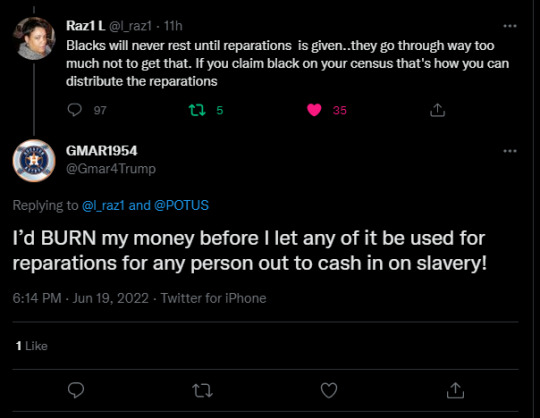


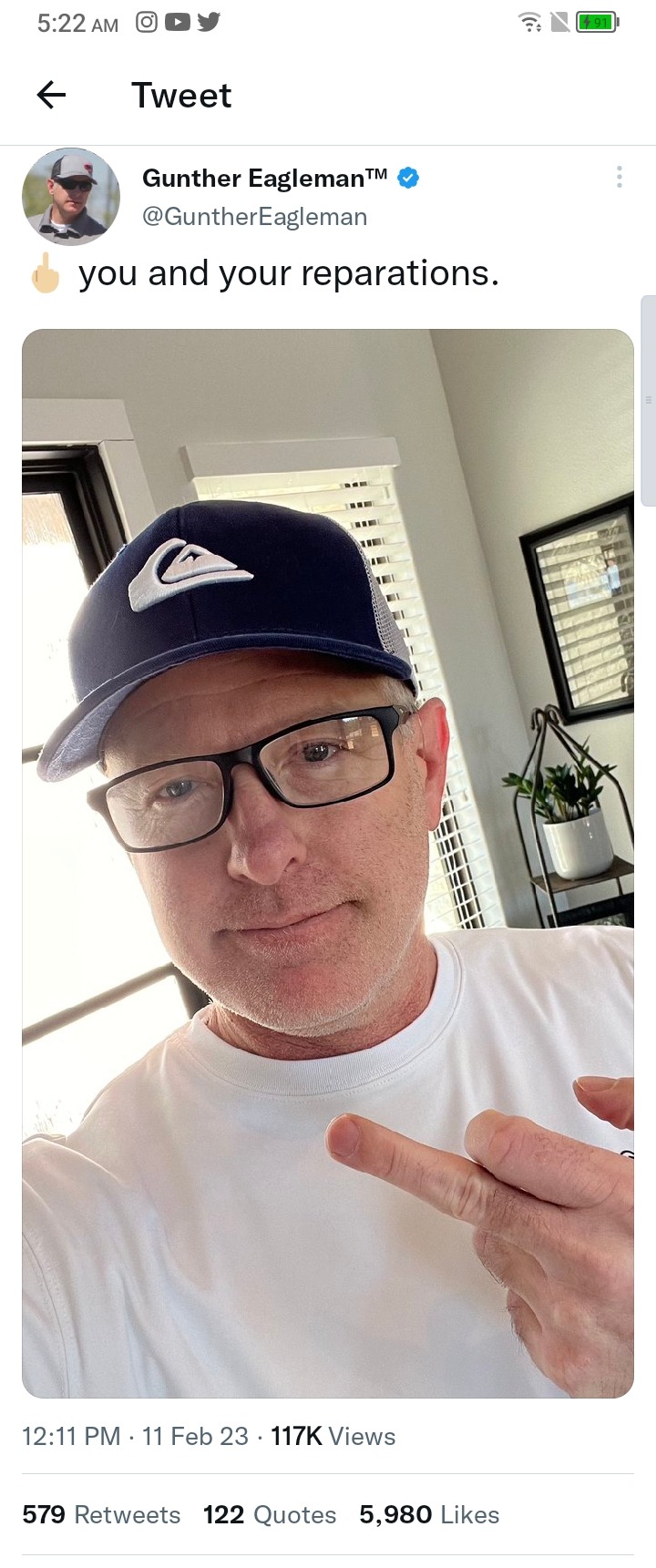
I took many screenshots, but will only share these examples I have seen on Twitter. There are many protesting reparations on Instagram, YouTube and other platforms as well.
There is constant hostility and aggression toward African Americans, yet I have NEVER seen this for other people who received compensation from America, like the Jews from the Auschwitz Holocaust, the Japanese in internment camps and also billions for other countries.

This nation is known for giving out land and money to other countries and citizens here in America. From free land for Caucasians through The Homestead Act, to the G.I. Bill, to reparations given to other groups.
As a serious question to the reader who reached this far: Why are people against reparations when this country had no trouble giving out money and land to other races? I'm in favor reparations for all who were wronged, and this is no different for my people here or victims of racism and colonialism in Brazil, Africa, Australia, Canada and other continents. The fight for justice will continue, but I want a genuine answer why these people are angry against reparations for African Americans.
#Black history month#Black history#racism#viral#February#reparations#White people#Black Americans#Black people#Youtube
5 notes
·
View notes
Photo
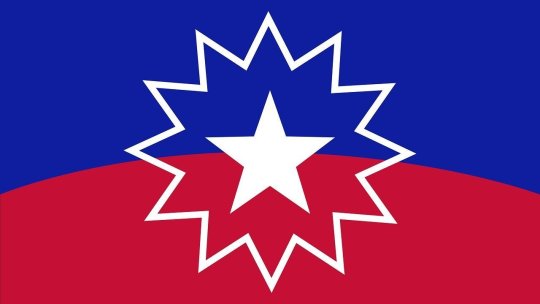
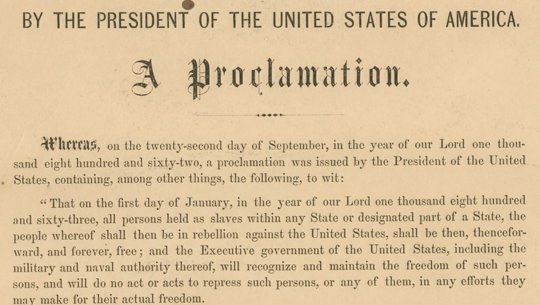

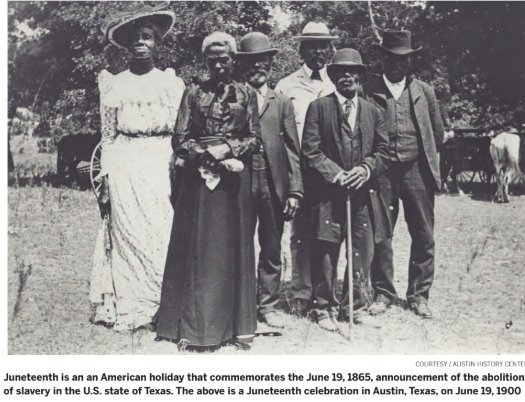

Chile, the utter disrespect...
Juneteenth commemorates the 19th day of June in 1865 , in which, enslaved Black Americans in Galveston, Texas, who were still laboring the land and generating the wealth of the United States for European colonists, were brought the news of freedom by Union soldiers. Abraham Lincoln signed the Emancipation Proclamation two and a half years prior, abolishing chattel enslavement on this soil.
Black Americans are an ethnic group whose roots are centuries deep within and tied to this land. It does not mean “a Black person who resides in America.” This day has been observed in Texas and various states since 1865. It is not a Pan-African holiday nor should it be treated as such. No one's holidays get hijacked and altered to be "more fitting" for people who are classified as racially Black in this country and push Black Americans in the background of our day of honoring our ancestors.
The antics and the amount of Juneteenth trademarks that have been filed since 2021 to as of recently to make money off of the ancestors....We don't disrespect anyone's holidays nor do we go to their countries and do shit like this, so don't do it to ours. Respect.

The colors of the Juneteenth flag are the same colors of the American flag created by Ben Haith. The star represents Texas and the arch represents a new horizon of opportunities for Black Americans.
Green/yellow/red are the colors of Ethiopia's flag, some Pan-African organizations and the Rastafari movement. That’s specific.

👆🏽 is not a Juneteenth flag.
The one above is also a Pan-African flag, but made by Marcus Garvey, who immigrated to this country with the hopes that he could convince Black Americans to leave our country for his Back-to-Africa Movement. No. The ancestors were not going for that. Not to mention Garvey chilled with the KKK and was good friends with white supremacists/eugenicists Earnest Cox and Walter Plecker, who reclassified all American Indians and Mulattoes as Negro before kicking off the Dawes Rolls for $5 Indians. Paper genocide. Many of his letters and surname stipulations are online. When you understand the centuries of our reclassification federally in this country, the shit will make sense.
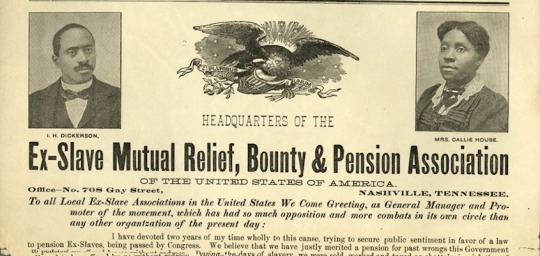
Callie Guy House was a formerly enslaved mother of 5, washerwoman, and a reparationist—one of the first on this land. In 1894, she founded The National Ex-Slave Mutual Relief Bounty and Pension Association with Black American pastor Isaiah Dickerson. Chapters grew in other states outside of Tennessee, and galvanized Black Americans in hopes of securing compensation for centuries of unpaid forced labor that built this country and its wealth, as well as food, medical, and burial expenses. She was found guilty of "mail fraud" by an all-white male jury and imprisoned for a year. How calculated.
In the meantime, Garvey decided to pick it up and attach our reparations to his organization—very Congressional Black Caucus, NCOBRA and NAARC of him—which got him deported. You would think he would relocate to an African country. Nope. He settled in London... 🙃
If you’re down with the latter flag, rep your set, love. But it’ll make more sense to do so on your own holidays and on the continent of Africa itself, as well, in whatever country you choose and they allow you to do so. Do what Garvey couldn’t do... After all it’s called Pan-Africanism not Pan-Americanism while waving a Pan-African flag.
34 notes
·
View notes
Text
Uganda seems like it is eager to become the Iran or Russia of Africa. You can now get the death penalty for having gay sex in the country.
Uganda’s president, Yoweri Museveni, has signed into law the world’s harshest anti-LGBTQ+ bill, which allows the death penalty for homosexual acts.
The move immediately drew condemnation from many Ugandans as well as widespread international outrage. The UK government said it was appalled by the “deeply discriminatory” bill, which it said will “damage Uganda’s international reputation”.
US President Joe Biden decried the act as “shameful” and “tragic violation of universal human rights”. He said Washington was considering “sanctions and restriction of entry into the United States against anyone involved in serious human rights abuses” – a suggestion that Ugandan officials may face repercussions.
Early on Monday, the speaker of the Ugandan parliament, Anita Annet Among, released a statement on social media confirming Museveni had assented to the law first passed by MPs in March. It imposes the death penalty or life imprisonment for certain same-sex acts, up to 20 years in prison for “recruitment, promotion and funding” of same-sex “activities”, and anyone convicted of “attempted aggravated homosexuality” faces a 14-year sentence.
Described by the UN high commissioner for human rights, Volker Türk, as “shocking and discriminatory”, the bill was passed by all but two of 389 MPs on 21 March. Museveni had 30 days to either sign the legislation into law, return it to parliament for revisions or veto it. He sent it back to MPs in April, with a request for reconsideration. The bill would have still become law without the president’s assent if he returned it a second time.
Museveni has been in power for 37 years. Africa really needs to get serious about term limits for heads of government.
There has been strong condemnation of Museveni. A statement from the UN read: “We are appalled that the draconian and discriminatory anti-gay bill is now law. It is a recipe for systematic violations of the rights of LGBT people and the wider population. It conflicts with the constitution and international treaties and requires urgent judicial review.”
Ashwanee Budoo-Scholtz, Africa deputy director for Human Rights Watch, said: “Museveni’s signing of the anti-homosexuality bill is a serious blow to the right to freedom of expression and association in Uganda, where instead of being restricted they ought to be strengthened.
“The law is discriminatory and is a step in the wrong direction for the protection of human rights for all people in the region.”
Not to minimize any guilt from Museveni's kleptocratic régime, but American far right religious extremists have been trying to do abroad what they haven't managed in the United States. They found fertile ground in Uganda.
U.S. Christian groups spent $280m fighting LGBT+ rights, abortion overseas
Globalizing Hatred
Why is homophobia so strong in Uganda?
From the DW article...
Many of the American evangelists who came to Uganda in the 1990s still live there, says Stella Nyanzi, adding that they poison the discourse: "We have a number of churches where the senior pastor is an American. Pastor Martin Ssempa, one of the most vocal homophobes and one of the biggest mobilizers of the anti-gay movement is married to an American." Priests like Ssempa spread a lot of misinformation in society, she says.
[ ... ]
Church missionaries brought Christianity to the country during British colonial rule, which officially ended in 1962.
The condemnation of homosexuality as "un-African" is pursued with zeal on the African continent, especially in conservative Christian circles — although Christianity is, from a historic point of view, a Western import, too. "While Africans argued that homosexuality was a Western import, they in turn used a Western religion as the basis for their argument," Nigerian LGBTQ activist Bisi Alimi wrote in 2015 in Britain's The Guardian, adding that many people justify their homophobic views by saying that homosexuality is not in the Bible. There is a "real confusion about Africa's past," Alimi concludes.
Because our species originated in Africa, homosexuality existed in Africa before it did anywhere else. So are Museveni, Ssempa, and the other Ugandan hatemongers implying that they come from a different planet?
President Biden condemned the latest Ugandan hate law.
Statement from President Joe Biden on the Enactment of Uganda’s Anti-Homosexuality Act
Trump or DeSantis probably would have awarded Museveni a medal.
#lgbtq+#uganda#death penalty#homophobia#bigotry#yoweri museveni#hatemongering#martin ssempa#christian fundamentalists#human rights
5 notes
·
View notes
Photo
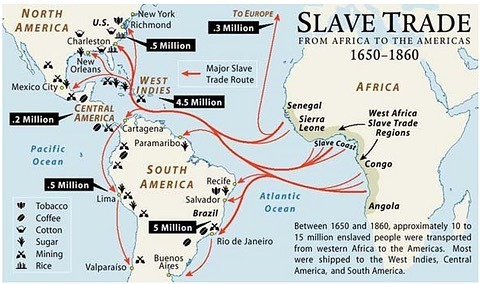
The African diaspora is the worldwide collection of communities descended from native Africans or people from Africa, predominantly in the Americas. The term commonly refers to the descendants of the West and Central Africans who were enslaved and shipped to the Americas via the Atlantic slave trade between the 16th and 19th centuries, with their largest populations in Brazil, the US, and Haiti. The term can be used to refer to the descendants of North Africans who immigrated to other parts of the world. Some scholars identify "four circulatory phases" of this migration out of Africa. The phrase African diaspora gradually entered common usage at the turn of the 21st century. The term diaspora originates from the Greek διασπορά (diaspora, literally "scattering") which gained popularity in English about the Jewish diaspora before being applied to other populations. The term has been used in scholarship to refer to more recent emigration from sub-Saharan Africa. The African Union defines the African diaspora as consisting: "of people of native African origin living outside the continent, irrespective of their citizenship and nationality and who are willing to contribute to the development of the continent and the building of the African Union". It constitutive act declares that it shall "invite and encourage the full participation of the African diaspora as an important part of our continent, in the building of the African Union". African diaspora populations include but are not limited to: African Americans, Afro-Caribbeans, Afro-Latin Americans, and Black Canadians – descendants of enslaved West Africans brought to the US, the Caribbean, and South America during the Atlantic slave trade. Afro-Arabs (Afro-Saudis, Afro-Omanis, Afro-Syrians, Afro-Palestinians, Afro-Iraqis, Afro-Jordanians, etc.), Afro-Iranians, Afro-Turks – descendants of Zanj slaves whose ancestors were brought to the Near East and other parts of Asia during the Indian Ocean slave trade. Siddis – descendants of Zanj slaves whose ancestors were brought to the Indian subcontinent (Pakistan and India). Referred to as the Makrani in Pakistan. #africanhistory365 #africanexcellence https://www.instagram.com/p/Cp-IbgiLUOm/?igshid=NGJjMDIxMWI=
3 notes
·
View notes
Text
All Of The African Goddess Names And Their Mythologies | Kidadl
The continent of Africa is home to a wide range of different countries and religions, each with their own beliefs and customs.
With these differing conventions comes an amazing variety of mythological stories and legendary African Gods and Goddesses. This article will help you to learn all about some of the most important African Goddesses from mythology.
This is a rundown of African spirits and Goddesses from some of the best known African religions and African mythology. This rundown also includes the names of some spirits and Goddesses found in the Afro-American religions, which are heavily influenced by many African religions.
For more, you can also check our articles about African last names and the top African boy names.
Berber Goddesses
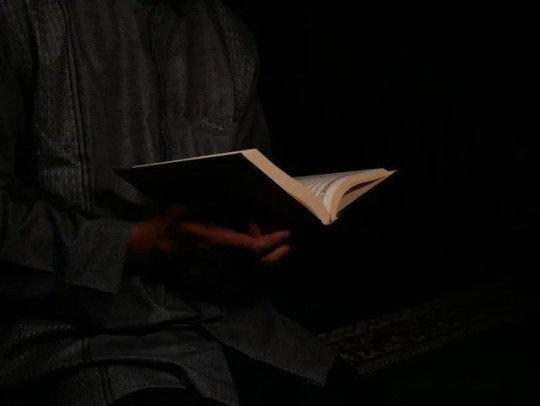
If you are searching for the names of Berber Goddesses we have created a list for you of many African girl names that are the names of Berber Goddesses. You can learn more about African mythology with this list.
1. Tanit, was a Berber goddess, the first Punic, and Phoenician Goddess of the central divinity of the Ancient period. Her partner was Baal-Hamon, and she has been warmly embraced by the Berber public.
2. Tinjis, was the wife of Antaeus in Berber mythology and is presented as a female deity. A famous Goddess of Africa.
Dahomey Goddesses
As well as African Goddesses, there are also many important Gods in African mythology, including Shango, Olorun, Obatala, Bumba, Oya, and Yemaya. These are the names of some popular African gods. If you are looking for the names of Dahomey Goddesses we have a great list for you. This list incldues some famous Goddesses ' names.
3. Gleti, is amoon Goddess of the people from the Kingdom of Dahomey, Benin is located in it. In Dahomey folklore, she is the mother of millions of stars.
4. Nana Buluku, is the mother Goddess who brought forth the moon soul Mawu, the sun soul Lisa, and the entirety of the universe in African mythology.
5. Mawu, is a famous Goddess in Africa, related to the sun and moon in Dahomey folklore. In this African mythology, she is the spouse of the male god Lisa. She is one of the most famous African deities.
Egyptian Goddesses
Antiquated Egyptian divinities are among the best known Gods and Goddesses from African mythology. If you are looking for some Egyptian Goddess names, we have put together this list full of useful information for you.
6. Bastet/Sekhmet, Bastet and Sekhmet were described as two parts of a similar Goddess, with Sekhmet representing the ground-breaking fighter and defender figure and Bastet, who was often portrayed as a feline, speaking to a gentler viewpoint. These Goddesses of beauty reflect peace for a lot of people.
7. Hathor, is an antiquated Egyptian Goddess, related later with the Goddess Isis, and, prior, with Sekhmet. She is ultimately viewed as the Primitive goddess from whom all others were developed. She is typically portrayed as a lady with a bovine structure and the ears of a cow.
8. Isis, as the Goddess of life and wizardry, Isis supported ladies and children and healed those in need. She is one of the best known Goddesses of Ancient Egypt in African mythology. Her iconic images involved the ankh, her wings and her seat crown.
9. Maat, an old Egyptian Goddess of truth, equity and the astronomical request. In some cases, she is portrayed with wings on each arm or as a lady with an ostrich quill on her head. The significance of this symbol is dubious, in spite of the fact that the god Shu, who in certain legends is Maat's sibling, also wears it.
10. Mut, also called Maut and Mout, was a mother Goddess worshipped in Ancient Egypt. Her name means "mother" in the ancient Egyptian language. Mut had a wide range of viewpoints and properties that changed and developed significantly over the long period of Ancient Egyptian culture.
11. Nut, in Egyptian religion she is a Goddess of the sky, frequently portrayed alongside the African God of the earth, Geb. As the goddess of the sky, Nut engulfed the sun at night and brought it back again at the beginning of the day.
12. Taweret, In Ancient Egyptian religion Taweret is the defensive Ancient Egyptian goddess of labor and ripeness. This is one of the most loved African mythology names.
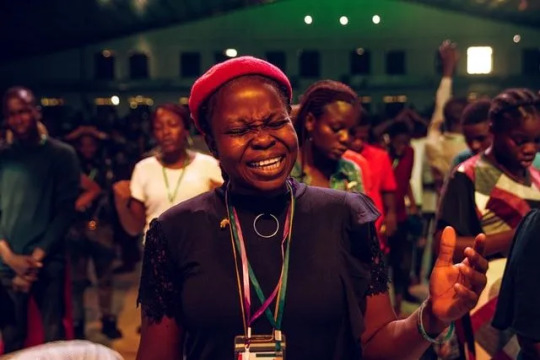
Guanche Goddesses
If you are looking to learn more about Guanche Goddess names from mythology in Africa, we have a list for you. This list includes plenty of information about the Goddesses, including what they are worshipped for in African mythology.
13. Chaxiraxi, is a Goddess, famous as the Sun Mother, in the religion of the native Guanche tribe. Chaxiraxi was one of the precious Goddesses of the Guanche pantheon. She was connected to the star Canopus.
14. Moneiba, was the defender and protector Goddess of women on the island of Hierro. Some Gods of Africa, such as the God Eranoranhan had a similar influence on men. According to African mythology, this Goddess is a warrior.
Igbo Goddesses
Check out our list of the best known Igbo Goddess names below.
15. Ahia Njoku, In Igbo folklore, Ahia Njoku, otherwise called Ifejioku Aha Njoku, is a Goddess worshipped by the Igbo individuals of Nigeria. This is one of the best known African deity names for Goddess worshipped by many people.
16. Ala, is the female deity of the earth, creativity and morality in Odinani.
Nubian Goddesses
If you are searching for some Nubian African Goddess names and meanings this is a perfect place for you. We have created a complete rundown of the most famous Nubian Goddess names from African mythology.
16. Amesemi, is a Kushite protective Goddess and wife of Apedemak, the lion God. She was pictured with a crown molded as a hawk, or with a bow moon on her head on top of which a bird of prey was standing.
17. Menhit, was a Nubian war Goddess in African mythology. Her name implies a champion status. She was loved in Egypt, where she was connected with the Goddesses Wadjet and Neith. African Goddesses in mythology such as Menhit are widely worshipped.
Yoruba Goddesses
Oshun is the African Goddess of love. The daughter of Oshun is another important figure in African mythology and both Oshun and Oshun's daughter are worshipped by many people. If you are looking for some Yoruba Goddesses' names and information about their life, we have put together this list for you.
18. Aja, is an Orisha, she represents the soul of the woodland and the creatures inside it, and homegrown healers. She is a supporter of woodlands and all the creatures that live there. She is quite famous among Nigerian Goddesses and Nigerian Gods.
19. Ayao, is an Orixa in the Santeria pantheon. She is the Orixa of the air. Ayao is believed to dwell in both the timberland and in the eye of the twister.
20. Egungun-Oya, in Yoruba mythology, Egungun-Oya is a Goddess of divination. 'Egungun' alludes to the aggregate spirits of the dead.
21. Iyami Aje, is a Yoruba expression of regard and charm used to portray a lady of African parentage who is considered as an Aje. An Aje is a woman with biological, spiritual and cosmic powers.
22. Oba (Orisha), in Yoruba mythology, Oba is the wife of Shango, the third Lord of the Oyo Empire. She is the Yoruba Goddess of a lightning storm. Obba is believed to be an Orisha of the stream.
23. Orisa Oluwa, is a divine Goddess of Yoruba legend. This Goddess forbids the use of umbrellas in Iwoye Ketu, a small town in Ogun State, in southwestern Nigeria.
24. Oshun, is an important waterway divinity among the Yoruba people. She is the Goddess of fertility, femininity, beauty and love. She is associated with fate and divination.
25. Queen Oronsen, is an Orisha from Yoruba folklore. She was the spouse of Olowo Rerengejen. The yearly Igogo celebration in Owo is led in her honor.
26. Velekete, is divine figure and Goddess of the ocean in the folklore of the individuals of Badagry. Velekete has a place of worship named after her called the Velekete Shrine.
27. Yemoja, is an important water figure from the Yoruba religion. She is an Orisha, and is the the benefactor soul of the seas and streams especially important in the Ogun River in Nigeria.
Zulu Goddesses
Are you looking for more information about the life and names of some Zulu Goddesses from South Africa? We have a interesting list for you.
28. Mamlambo, is the name of a divine figure in South African and Zulu folklore. She is known as the Goddess of streams and depicted as a huge snake-like animal.
29. Mbaba Mwana Waresa, is the name of a fertility goddess of the Zulu tribe found in Southern Africa. She controls rainbows, agribusiness, harvests, rain, water and earth. She encouraged her kin to plant and grow crops.
Kidadl has lots of great names articles to inspire you. If you enjoyed our suggestions for African Goddesses' names and are looking to learn more about the names of other divine figures from African mythology and other mythologies, then why not take a look at something different like our article all about the best beautiful cat Goddess names, or this ultimate list of Demigod names?
7 notes
·
View notes